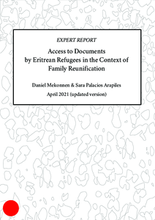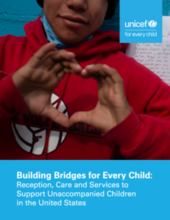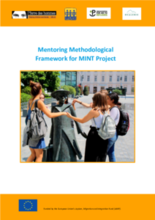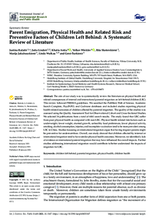Displaying 141 - 150 of 835
This Independent Expert Report is concerned with challenges experienced by Eritrean refugees in Europe in the context of family reunification processes, in particular those relating to strict documentary requirements demanded by some EU Member States, in particular Germany.
This article compares the reception and integration of unaccompanied minors (UM) in the two countries with a particular focus on their access to education and employment.
The objective of the present study was to characterize unaccompanied minors in Portugal and understand the processes of transition into the age of majority, using a mixed-methods approach.
Using data collected from two provinces in China through an online survey, the current study aimed to investigate left‐behind children's emotional and academic adjustment during the COVID‐19 pandemic in China.
This article is based on ethnographic fieldwork in an Italian reception centre for male ‘unaccompanied minors’. The article examines the political ambivalence of hospitality for young African men as they transition to adulthood and how this is experienced through the intersections of age, gender and race.
This article synthesizes relevant theories and models of disaster, migration, and family resilience in order to create a framework in which to organize the complex processes that occur within families as a result of migration and that affect the mental health of children.
UNICEF’s new report, Building Bridges for Every Child: Reception, Care and Services to Support Unaccompanied Children in the United States, considers global discussions on adequate reception and care for unaccompanied migrant and asylum-seeking children. Following the journey of children traveling alone from northern Central America to the U.S. – entering, navigating and leaving the U.S. reception and care system and transitioning to community life – this report presents eight overarching recommendations for the realization of a better and more equitable system of care and support for every child.
Through the MINT – Mentoring for Integration of third country national children affected by migration project, Terre des hommes and its partners aimed to empower refugee and migrant children, as well as European youth, to engage in new integration activities. This final Framework sets out guidelines drawn from existing documents and recognised good practice, as well as being informed by the experience of implementation.
This article examines the housing and social policies for URMs in Greece.
The aim of this study was to systematically review the literature on physical health and related consequences of internal and international parental migration on left-behind children (LBC).




